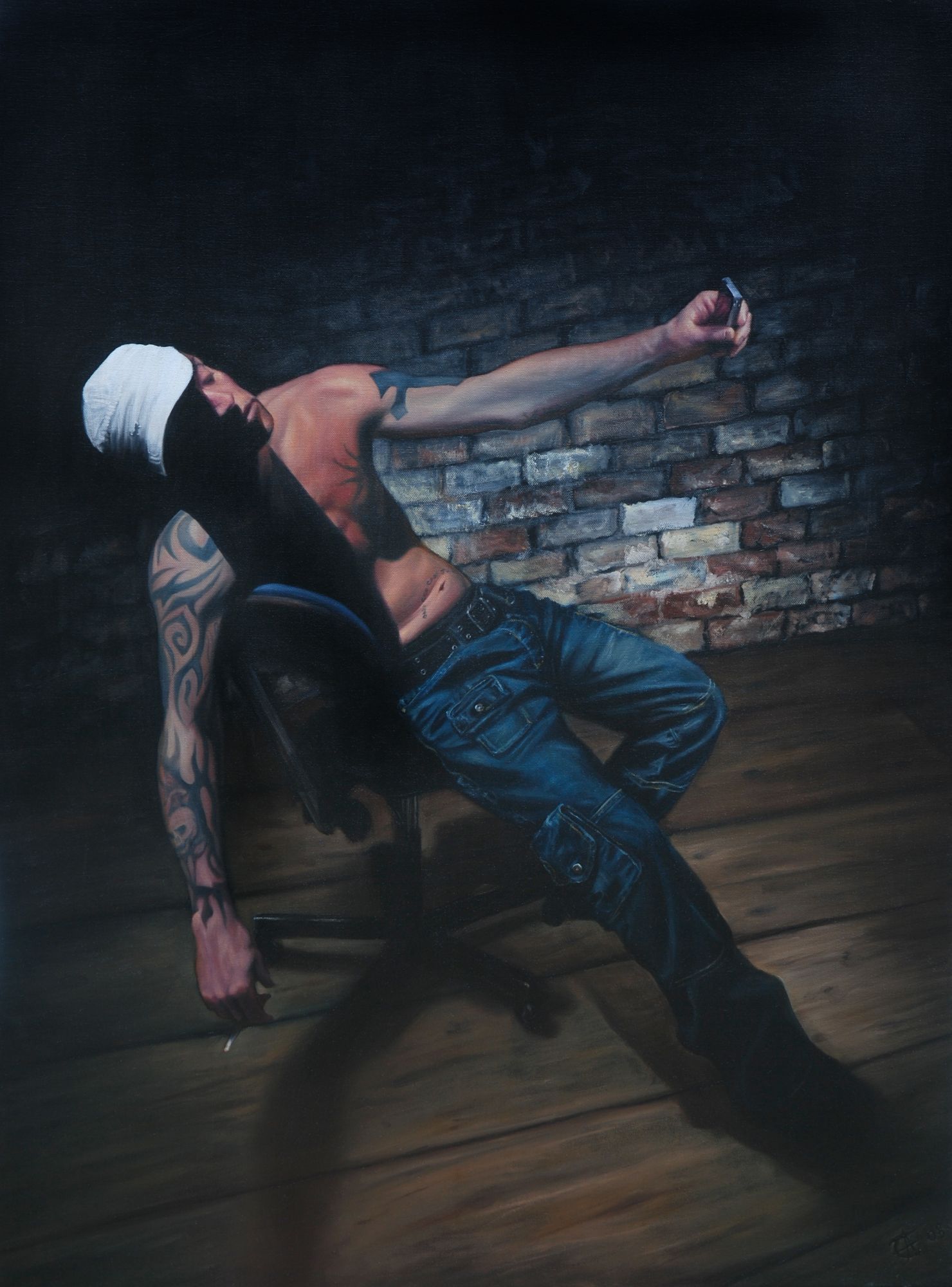"Harking back to the early 17th century paintings of Caravaggio, Tooth's Concilium Plebis comprises a series of portraits which present people who are often derided as 'chavs' and 'hoodies' in traditional religious poses. A single mother and her child resemble the Virgin Mary and baby Jesus; a hooded youth looks up to the sky in saintly contemplation; and a bare-chested young man holds his arms outstretched as if nailed to the cross...
In each of the gilded-framed portraits, Tooth masterfully mimics Caravaggio's trademark use of chiaroscuro, giving her subjects a celestial glow that further adds to the aura of divinity. Although it might initially appear as if Tooth is mocking her subjects, using members of the public as models for biblical scenes is exactly what Caravaggio did 400 years ago. By depicting a girl dressed in a hooded top with gold hooped earrings as the Virgin Mary, Tooth not only challenges negative connotations, but also suggests that anyone can be touched by the divine."
Christopher Collett, Metro UK












